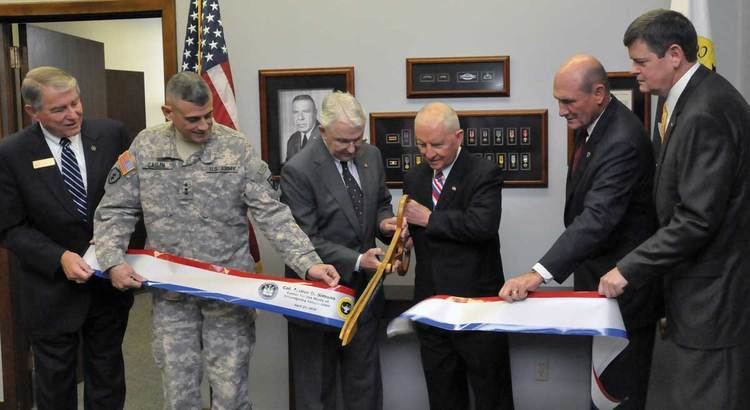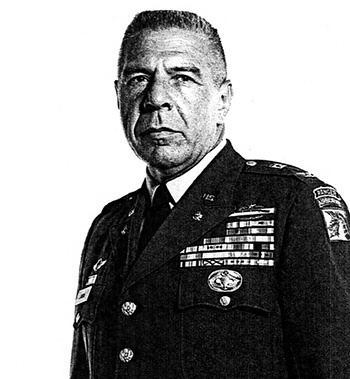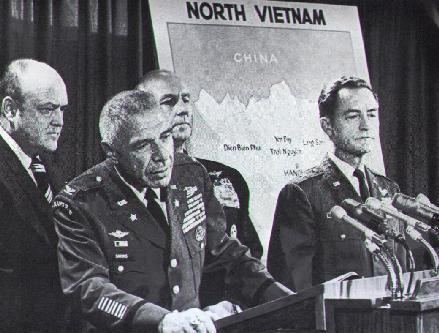Nickname(s) "Bull" Name Arthur Simons | Years of service 1941 — 1971 Service/branch Special Forces | |
 | ||
Born June 28, 1918New York City, New York ( 1918-06-28 ) Awards -Distinguished Service Cross (1971)-Silver Star (1944)-Bronze Star (1946)-Legion of Merit (1970)-Vietnam Service Medal Died May 21, 1979, Florida, United States | ||
Allegiance United States of America Battles and wars World War II, Vietnam War | ||
Arthur D. "Bull" Simons (June 28, 1918 – May 21, 1979) was a US Army Special Forces colonel best known for leading the Son Tay raid, an attempted rescue of U.S. prisoners of war during the Vietnam War from a North Vietnamese prison at Son Tay.
Contents

Although serving 30 years as an officer spanning three wars, Simons was deemed not to fit the "career mold" for a general officer and did not rise above the rank of colonel. An Air Force officer who helped plan and execute the Son Tay raid wrote of Simons: "He was not out to make a name for himself; he was there to do his duty. He did not attend all the professional advancement schools and did not cultivate any sponsors for his career. He just answered every call because it was the right thing for an American soldier to do."

Early life

Arthur David Simons was born in New York City, moving to Missouri in his youth. He attended the University of Missouri-Columbia and majored in journalism, entering the ROTC program there in 1937. After graduation, he married his girl-friend Lucille, eventually having two boys, Bruce and Harry. He remained married to Lucille for 37 years until her death on March 16, 1978.
Army service

Simons was commissioned a second lieutenant in the Field Artillery Branch in 1941, and was initially assigned to the 98th Field Artillery Battalion, a part of one of the Army's pack mule units. In his first assignment as a Platoon Leader, the new lieutenant was so quiet and reserved (he later said he wanted to learn from the sergeants that seemed to know their business well) that one of his sergeants came to believe that Simons was a mute. The unit was dispatched to Australia, but immediately diverted to New Guinea in the early stages of World War II, and Simons thrived in the harsh jungle environment. He was soon promoted to captain and served as a Battery Commander in the battalion from 1942–43. The mules themselves did not prove suitable in the jungle, and the unit was dissolved in 1943. Simons took his battery to the newly forming Ranger Battalion that would come out of the dissolution of his old unit. He soon became the commander of "B" (Baker) Company and later the Battalion Executive Officer (XO) of the 6th Ranger Battalion under Lieutenant Colonel Henry Mucci. Simons participated in several hazardous landings with the Rangers in the Pacific. He led a team of engineers and Navy personnel tasked to de-mine the Leyte channel before the invasion of the island began in earnest. On Luzon in the Philippines, he participated in the Raid at Cabanatuan that rescued approximately 500 POWs who were mostly survivors of the Bataan Death March. For his actions in the raid he was awarded the Silver Star. He quickly rose to the rank of major and continued to prove his worth as a combat leader. At the conclusion of the Second World War, Major Simons left the active Army for five years.
Simons was recalled to active duty in 1951 to serve as an infantry instructor and Ranger trainer in the Amphibious and Jungle Training camp at Eglin AFB, Florida. Other assignments included a year as a Public Information Officer (PIO, now "Public Affairs Officer" or PAO) at Ft. Bragg, North Carolina, a job that he despised (he held a low opinion of the media, one that would prove itself in later years and assignments. "The press hasn't done very well for the American soldier," he would later remark.) Simons also completed tours with the Military Assistance Advisory Group, Turkey and XVIII Airborne Corps before joining the 7th Special Forces Group in 1958. In 1960 he served as Deputy Commander/Chief of Staff of the U.S. Army Special Warfare Center. Promoted to lieutenant colonel in 1961, he commanded the 107-man Operation White Star Mobile Training Team in Laos from 1961 to 1962 and was the first commander of the 8th Special Forces Group, Panama from 1962 to 1964. From Panama, he was assigned to the Military Assistance Command, Vietnam Studies and Observations Group (MACV-SOG), which conducted numerous behind-the-line missions in Southeast Asia.
In 1970, Simons was hand-picked to command the Army component of Operation Ivory Coast, a joint special operations effort to rescue American prisoners of war from the Son Tay prison in North Vietnam. While it did not rescue any prisoners due to an intelligence failure (the raiders were not notified that the prisoners had been moved a few months earlier), the otherwise highly-successful operation did force North Vietnam to consolidate all of the prisoners into a few central compounds in Hanoi, resulting in a boost in the prisoners' morale and improved treatment. They were also heartened to know that a rescue effort had been attempted. While the mission did not accomplish its primary objective, the North Vietnamese were given pause at the ease in which Americans could invade so close to their capital, and no American lives were lost in the operation (and only one minor injury, a sprained ankle). For his outstanding leadership, Simons was decorated by President Richard M. Nixon with the Distinguished Service Cross at the White House on November 25, 1970.
Simons' nickname "Bull" was taken from a physical training game called the "bull pit," where one soldier climbs down into a pit in the ground, and other soldiers engage in trying to pull the first soldier from the pit. Simon's large physical stature and great strength – even in his fifties, he did 250 push-ups every day – made him a formidable challenge to remove from the pit, and the name "Bull" stuck.
In retirement
Colonel Simons retired from the Army on July 31, 1971, and moved with his wife to a small farm in Red Bay, Florida, engaging in livestock farming and doing amateur gunsmithing on the side.
In late 1978, Simons was contacted by Texas businessman Ross Perot, who requested his direction and leadership to help free two employees of Electronic Data Systems who were arrested shortly before the Iranian Revolution. Simons organized a rescue mission and ultimately freed the two men from the Iranian prison. All involved returned safely to the United States.
Three months later, while on vacation in Vail, Colorado, Arthur Simons had a myocardial infarction. He was transported to Dallas, Texas by a private jet chartered by Perot. He died 1 month later of persistent heart failure at the age of 60. He is buried in the Barrancas National Cemetery in Pensacola, Florida.
Ross Perot and others founded a scholarship initiative for the children of the casualties from the Iranian hostage rescue attempt, and named the fund in honor of COL Simons's memory.
Colonel Simons's great contributions to the Army and the Special Forces community are honored with a 12-foot-tall (3.7 m) statue that stands in front of the John F. Kennedy Special Warfare Center and School at Ft. Bragg, North Carolina. The John F. Kennedy Special Warfare Center and School presents an annual award called the "'Bull' Simons Award" to an outstanding special forces operator. Colonel Arthur Simons was also inducted into the Ranger Hall of Fame.
